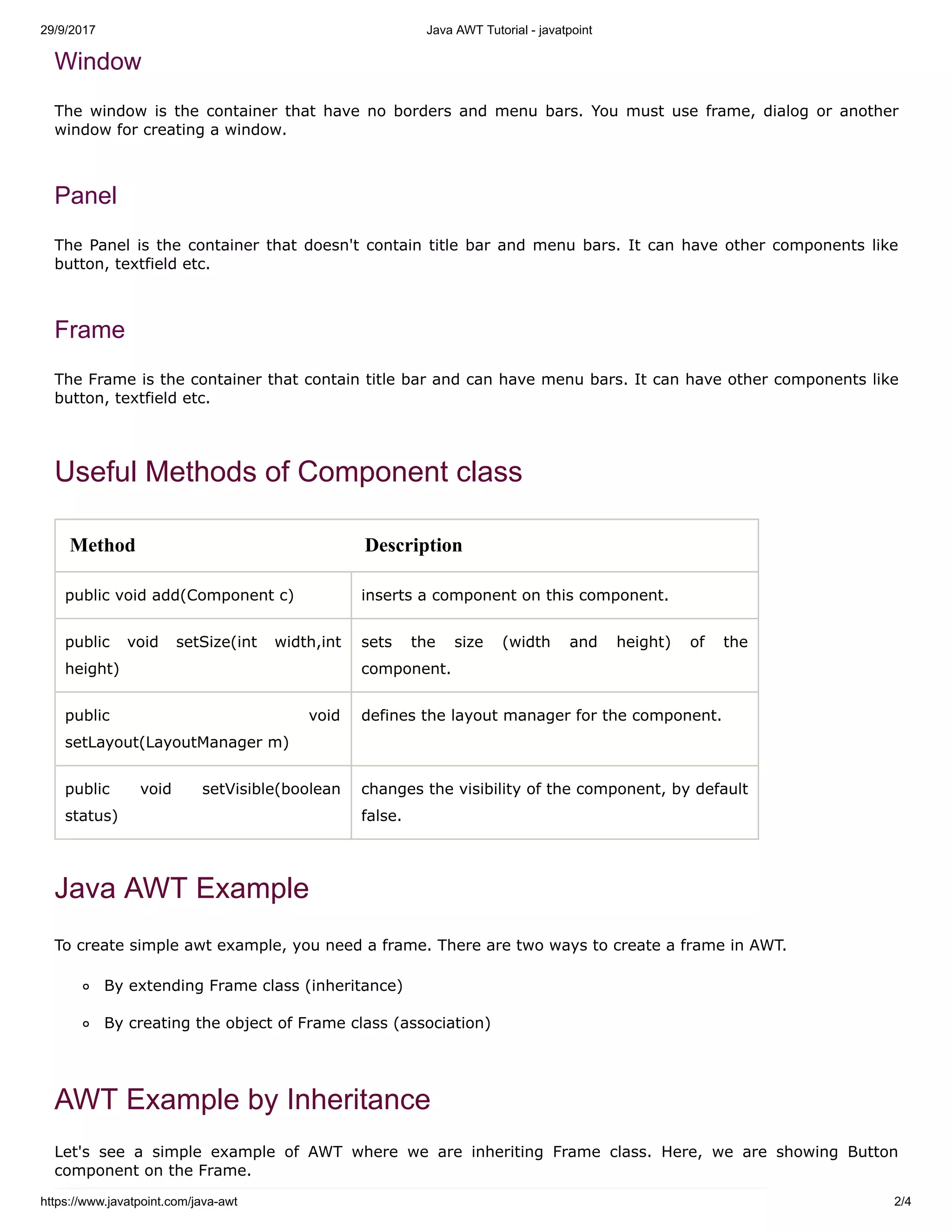This document provides an overview of Java AWT (Abstract Window Toolkit), which is an API for developing GUI applications in Java. It discusses key AWT concepts like components, containers, frames and panels. It also provides examples of creating simple AWT applications by extending the Frame class and by instantiating the Frame class. The examples demonstrate how to add buttons to a frame and set the button position and frame size.


![29/9/2017 Java AWT Tutorial - javatpoint
https://www.javatpoint.com/java-awt 3/4
download this example
The setBounds(int xaxis, int yaxis, int width, int height) method is used in the above example that sets the
position of the awt button.
AWT Example by Association
Let's see a simple example of AWT where we are creating instance of Frame class. Here, we are showing
Button component on the Frame.
import java.awt.*;
class First extends Frame{
First(){
Button b=new Button("click me");
b.setBounds(30,100,80,30);// setting button position
add(b);//adding button into frame
setSize(300,300);//frame size 300 width and 300 height
setLayout(null);//no layout manager
setVisible(true);//now frame will be visible, by default not visible
}
public static void main(String args[]){
First f=new First();
}}](https://image.slidesharecdn.com/javaawttutorial-javatpoint-181126034935/75/Java-awt-tutorial-javatpoint-3-2048.jpg)
![29/9/2017 Java AWT Tutorial - javatpoint
https://www.javatpoint.com/java-awt 4/4
download this example
import java.awt.*;
class First2{
First2(){
Frame f=new Frame();
Button b=new Button("click me");
b.setBounds(30,50,80,30);
f.add(b);
f.setSize(300,300);
f.setLayout(null);
f.setVisible(true);
}
public static void main(String args[]){
First2 f=new First2();
}}](https://image.slidesharecdn.com/javaawttutorial-javatpoint-181126034935/75/Java-awt-tutorial-javatpoint-4-2048.jpg)